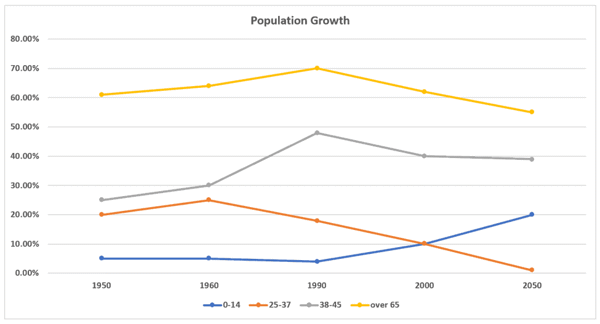Trong bài viết hôm nay, Anh ngữ TA – Địa chỉ học luyện thi IELTS uy tín tại Đà Nẵng chia sẻ với các bạn cách giải đề thi IELTS Writing ngày 11/01/2020 chi tiết nhất.
Xem thêm: Hướng dẫn giải chi tiết đề thi IELTS Writing ngày 04/01
Mục lục bài viết
Hướng dẫn giải chi tiết đề thi IELTS Writing ngày 11/01/2020

WRITING TASK 1 | LINE CHART
The table below shows the number of vehicles registered in Australia in 2010, 2012 and 2014.

Line Chart (biểu đồ đường) là dạng bài quen thuộc và đơn giản nhất trong phần IELTS Writing task 1. Chúng ta chỉ cần nắm rõ các bước phân tích, sử dụng cấu trúc, từ vựng diễn đạt xu hướng phù hợp là đã có thể thành công chinh phục Line chart.
Đối với Line Chart, chúng ta cần lưu ý những điểm sau:
– Line chart luôn có sự thay đổi theo thời gian, do đó cần chú ý sử dụng thì của động từ phù hợp
- Thời gian trong quá khứ → dùng thì quá khứ đơn
- Thời gian trong tương lai → dùng cấu trúc dự đoán, diễn đạt trong tương lai
– Đối tượng trong biểu đồ (các “line”). Thông tin biểu đồ đưa ra (chú thích trục đứng, trục ngang)
1. Hướng dẫn làm bài:
– Line chart có sự thay đổi theo thời gian từ quá khứ đến tương lai → sử dụng linh hoạt thì quá khứ đơn và cấu trúc dự đoán trong tương lai
– Các “line” biểu diễn sự thay đổi tỉ lệ dân số theo nhóm tuổi qua từng năm (từ 1950 – 2050)
– Đối tượng: dân số theo nhóm tuổi: 0-14, 25-37, 38-45, over 65, tỉ lệ dân số (proportion of population)
– Đơn vị: % (percentage), ages
2. Dàn bài tham khảo:
Introduction:
-
Paraphrase đề bài: The provided chart illustrates changes of four different age groups…
-
Overview: Dân số của New Zealand là dân số già: nhóm trên 65 tuổi chiếm đa số. Nhưng dân số bắt đầu trẻ hóa do sự tăng thêm của nhóm tuổi dưới 14 và giảm đi của các nhóm tuổi lớn hơn.
Body 1: Miêu tả giai đoạn từ 1950 đến 2000.
-
Giai đoạn này cho thấy sự già hóa của dân số New Zealand với sự tăng của dân số trong các nhóm tuổi già (38-45, trên 65) trong khi dân số trong nhóm trẻ (25-37) giảm và dân số dưới 14 thì giữ nguyên.
Body 2: Miêu tả giai đoạn được dự đoán trong biểu đồ (từ 2000 đến 2050).
-
Giai đoạn này cho thấy dân số New Zealand đang bắt đầu trẻ hóa với sự giảm của nhóm tuổi già (38-45, trên 65) và sự tăng lên đáng kể của nhóm trẻ em dưới 14 tuổi.
3. Bài viết tham khảo:
The provided chart illustrates changes of four different age groups contributing to the total population in New Zealand from 1950 to 2000 followed by predictions towards 2050.
Overall, New Zealand has an aging population with the dominance of people above 65. However, their citizens appear to rejuvenate owing to the increase in the children and the decrease in the elderly going forward.
During the period of 50 years from 1950 to 2000, the proportion of people over 65 and aged 38-45 increased to about 60% and 40% in 2000 respectively, not to mention the peak hitting exactly at 70% for the former and slightly under 50% for the latter in 1990.
The 25-37 age bracket, on the other hand, saw a decrease to merely 10% in 2000 from 20% in the mid 20th century. Lastly, the population of those aged 14 and below remained unchanged at approximately 5% during the period surveyed.
Fast forward 50 years, New Zealand is predicted to see declines in the proportion of the elderly, middle-aged and adults, specifically stopping at around 55%, 40% and nearly 0% in 2050. In contrast, numbers suggest the children bracket shall see a better day at roughly 20% in 2050, which is a four-fold growth compared to the previous century.
4. Useful vocabulary:
- dominance: chiếm ưu thế
- rejuvenate: trẻ hóa
- saw a decrease: tăng
- people from 25 to 37 = people aged 25-37 = the 25-37 age group = the 25-37 age bracket: người trong nhóm tuổi 25-37
- be predicted/ anticipated/ projected to…: được dự đoán
- four-fold: 4 lần
Xem thêm: Hướng dẫn giải chi tiết đề thi IELTS Writing ngày 16/01
WRITING TASK 2
Spoken communication is more powerful than written communication. To what extent do you agree or disagree?
1. Phân tích đề bài:
Đề bài đề cập đến vấn đề giao tiếp. Người viết được yêu cầu nêu rõ quan điểm, đồng ý hay không đồng ý về việc “giao tiếp bằng lời nói hiệu quả hơn giao tiếp bằng chữ viết.”
Lưu ý về dạng bài:
Đây là dạng bài Opinion, một dạng câu hỏi cực kỳ phổ biến trong phần viết IELTS, yêu cầu người viết đưa ra một quan điểm rõ ràng về một ý kiến nào đó. Ý kiến này được thể hiện xuyên suốt, nhất quán giữa mở bài, thân bài và kết bài.
Lỗi thường gặp ở dạng bài này chính là việc quan điểm của người viết không thống nhất hoặc không được thể hiện một cách rõ ràng. Bên cạnh đó, người viết cần phải lưu ý đề cập được tất cả các phần của đề bài (hai ý: hình thức giao tiếp bằng lời nói và hình thức giao tiếp bằng chữ viết). Nếu chỉ tập trung phân tích một ý chính và bỏ qua ý còn lại, điểm Task Response của bài viết sẽ bị giảm xuống 6.
Lưu ý với đề bài IELTS Writing ngày 11/01 – Task 2:
Một số bài viết có thể sẽ dùng cụm từ “verbal communication” để thay thế cho “spoken communication”, nhưng thực tế, hai khái niệm này hoàn toàn khác nhau.
“Verbal” có 2 định nghĩa trong từ điển Cambridge là “spoken rather than written” và “relating to words”. Có thể thấy, dù nghiêng về hướng “spoken”, “verbal communication” vẫn có thể bao gồm hình thức chữ viết, miễn là có liên quan đến ngôn ngữ, để phân biệt với “non-verbal communication” là giao tiếp phi ngôn ngữ.

2. Bài mẫu tham khảo:
When it comes to imparting and exchanging information, some people believe that speaking is more powerful than writing. Personally, I think that both methods can be effective forms of communication, but it depends on the specific circumstance as to which is the most appropriate at the time.
On the one hand, speaking is an extremely effective and efficient mode of communication in certain contexts. Oral communication enables people to emotionally connect with their listeners. The tone of someone’s voice can powerfully convey a wide range of emotions, and that is why some people are able to inspire and influence others simply through a powerful speech, or a song, or piece of poetry. Secondly, misunderstandings can also be easily prevented when people interact face to face. For example, if one person is confused about what the other is saying, he can immediately ask for further explanation to ensure that their message is completely understood.
On the other hand, writing can also be an effective tool in everyday communication. In the workplace, written messages, emails, and documents are effective tools, while speech may sometimes be ignored or interpreted in different ways, written forms are usually stated very clearly. Employees can therefore reread documents repeatedly to avoid miscommunication. Additionally, written documents are usually required in legal procedures. This is the reason why many important documents including memos, reports, job descriptions, and e-mails are usually kept in written form.
In conclusion, both spoken and written modes of communication have their own purposes, benefits and drawbacks, and people have to carefully consider which mode to apply in each specific situation.
3. Từ vựng theo chủ đề:
- impart or exchange information: truyền đạt hoặc trao đổi thông tin
- mode of communication: cách thức giao tiếp
- emotionally connect with listeners: kết nối về cảm xúc với người nghe
- inspire and influence others: truyền cảm hứng và ảnh hưởng đến người khác
- misunderstandings: sự hiểu lầm, hiểu sai
- avoid miscommunication: tránh hiểu sai
- legal procedures: thủ tục pháp lý

